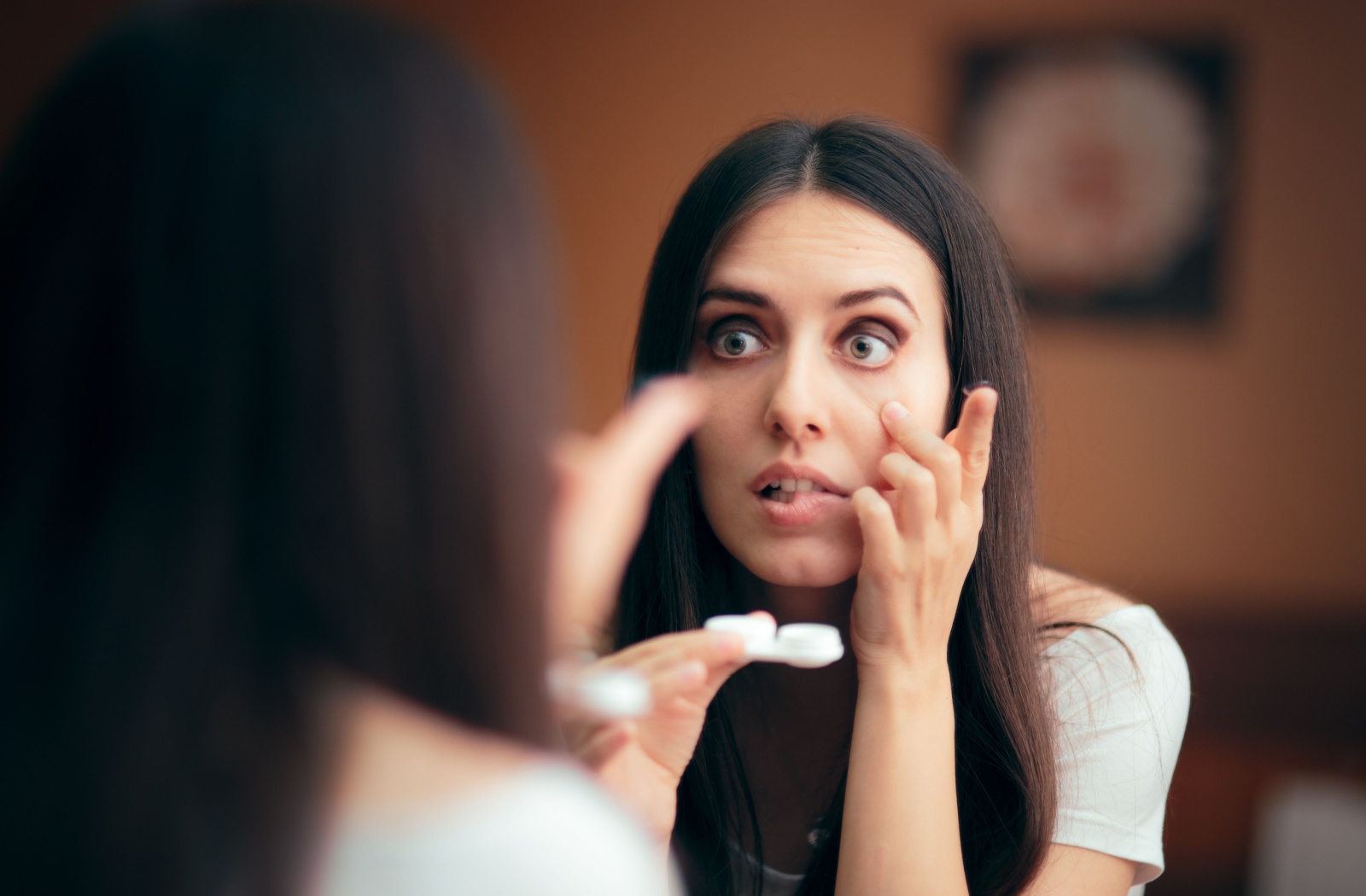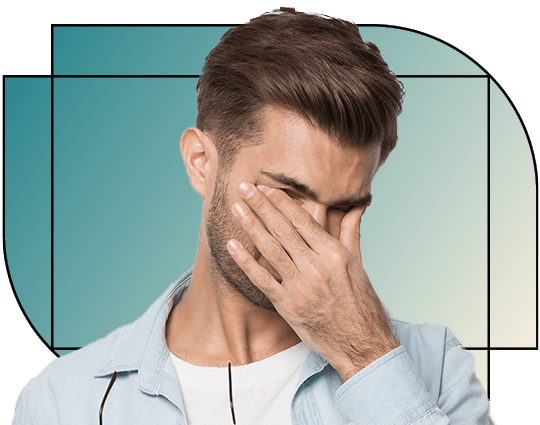Screen-Based Strain
What does your technology do for you? Today, we can order dinner, buy concert tickets, chat with friends, play games, and even work from virtually any device with a screen. Smartphones, gaming consoles, computers, and tablets make our lives more convenient.
But, there are some drawbacks to increased screen time. It’s almost impossible to get away from our devices and as a result, an estimated 65% of Americans suffer from discomfort related to digital eye strain.
Digital eye strain is also known as computer vision syndrome. It refers to a group of ocular issues stemming from too much time spent using digital devices.
If you’re experiencing eye discomfort after staring at your screen, we can help. We can assess your screen habits and provide strategies to mitigate your discomfort.
Book an appointment to find relief from digital eye strain today.
Request AppointmentSymptoms of Digital Eye Strain
There are a few common symptoms associated with digital eye strain, including:
- Dry eyes
- Headaches
- Strained eyes
- Blurry vision
- Neck and shoulder pain
Often, symptoms will alleviate when you take a solid screen time break. But, discomfort can return once you’re in front of a digital device again. In order to find relief in the long term, you may need to implement some mitigation strategies.
It’s also important to visit your optometrist to assess whether there’s another underlying condition contributing to your symptoms.
Request AppointmentMitigating Digital Eye Strain
Adjusting your work area, taking intentional screen breaks, and adjusting your lighting while using a digital device are all strategies that help reduce digital eye strain.
Ergonomics
Office ergonomics and proper posture can help to keep you comfortable while using digital devices. While you’re at your desk, be sure to sit upright with your feet flat on the floor. Your shoulders should not be rounded or hunched and your neck should align with your torso.
Screens should be about 4–5 inches below eye level and 20–28 inches from your eyes. And keep your keyboard and mouse near enough to prevent reaching.
Settings
If you’re reading on your digital device, increase the font size to minimize squinting. Contrast and color tones should also be set to maximize your comfort.
Lighting Levels
The levels of light both in the room around you and on your device can prevent digital eye strain. Turn down your screen’s brightness to match the lighting levels of your surroundings. If the light from the room is reflecting in your screen, the glare can also contribute to eye strain.
Anti-glare screens are available for your device’s display, and glasses with an anti-reflective coating can help.
The 20-20-20 Rule
When you’re concentrating on your work, it might be challenging to take a break, but following the 20-20-20 rule can help to relax your eyes. Every 20 minutes, look at something 20 feet away for 20 seconds. This gives your eyes a chance to refocus, helping to reduce strain.
Kids & Digital Eye Strain
Adults use screens frequently, but they’re creeping into kids' lives too. Studies show that the risk of children developing visual issues increases after more than 3 hours of screen time.
Increased device use also means kids are spending more time indoors. The World Health Organization recommends limiting screen time for children and encouraging them to play outside instead.
Children should have regular, comprehensive eye exams to assess the health of their vision, regardless of their screen time.
Book an appointment today!
Request AppointmentOur Location

Our Address
Visit us on Guadalupe Street, just across from the Jesse H. Jones Communication Center (Building B). You’ll find parking behind the building or at the pay-to-park area across the street from Walter Webb Hall.
- 2510 Guadalupe Street
- Austin, TX 78705
Clinic Hours
- Monday: 9:30 AM – 6:00 PM
- Tuesday: 9:30 AM – 6:00 PM
- Wednesday: 9:30 AM – 6:00 PM
- Thursday: 9:30 AM – 6:00 PM
- Friday: 9:30 AM – 6:00 PM
- Saturday: Closed
- Sunday: Closed
Contact Us
- Phone: 512-472-4498
- Email: [email protected]

Our Brands








Our Google Reviews
Our Blogs
Does VSP Cover Contact Lenses?
Contact LensesVSP typically includes coverage that supports both the cost of contact lenses and the care that comes with them, making it easier to find a solution that fits your lifestyle and budget. […]
Does Myopia Worsen With Age?
Eye HealthThe short answer: it depends on your age, eye health, and whether any control methods are in place. […]
Best Contact Lenses for Dry Eye
Contact Lenses, Dry Eye, EyewearIf you experience heightened dry eye symptoms due to contact lenses, the best alternative kinds of contact lenses you can try include silicone hydrogel lenses, daily disposables, or scleral lenses. […]
Does VSP Cover Contact Lenses?

VSP typically includes coverage that supports both the cost of contact lenses and the care that comes with them, making it easier to find a solution that fits your lifestyle and budget. […]
Does Myopia Worsen With Age?

The short answer: it depends on your age, eye health, and whether any control methods are in place. […]
Best Contact Lenses for Dry Eye

If you experience heightened dry eye symptoms due to contact lenses, the best alternative kinds of contact lenses you can try include silicone hydrogel lenses, daily disposables, or scleral lenses. […]









